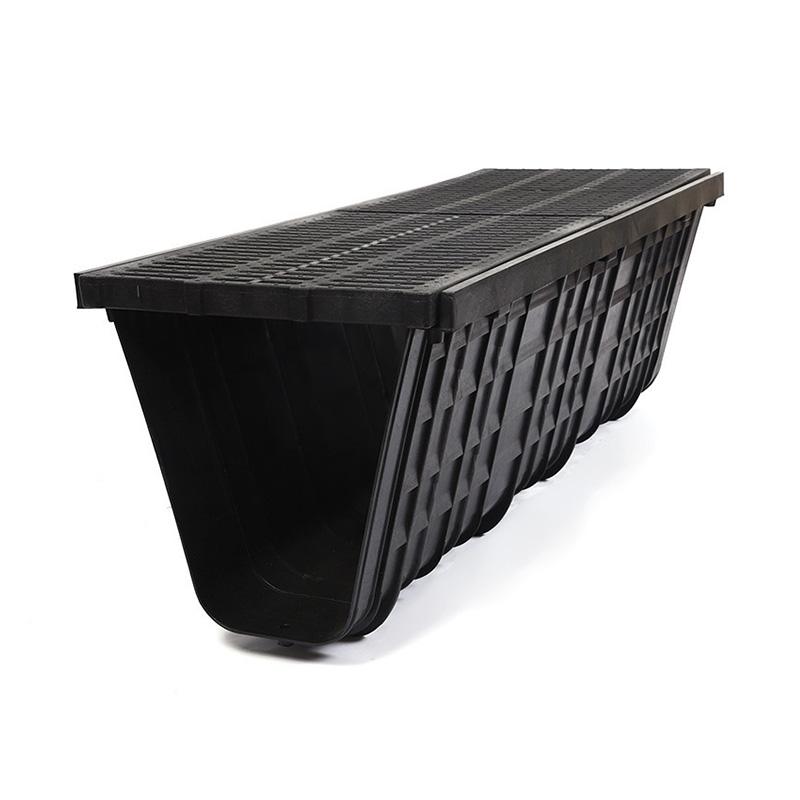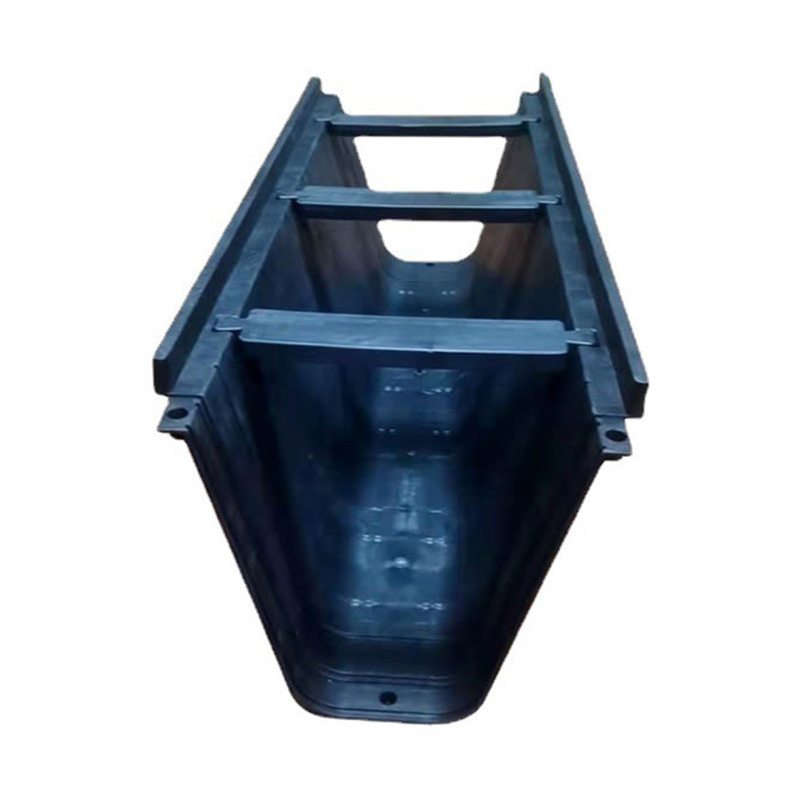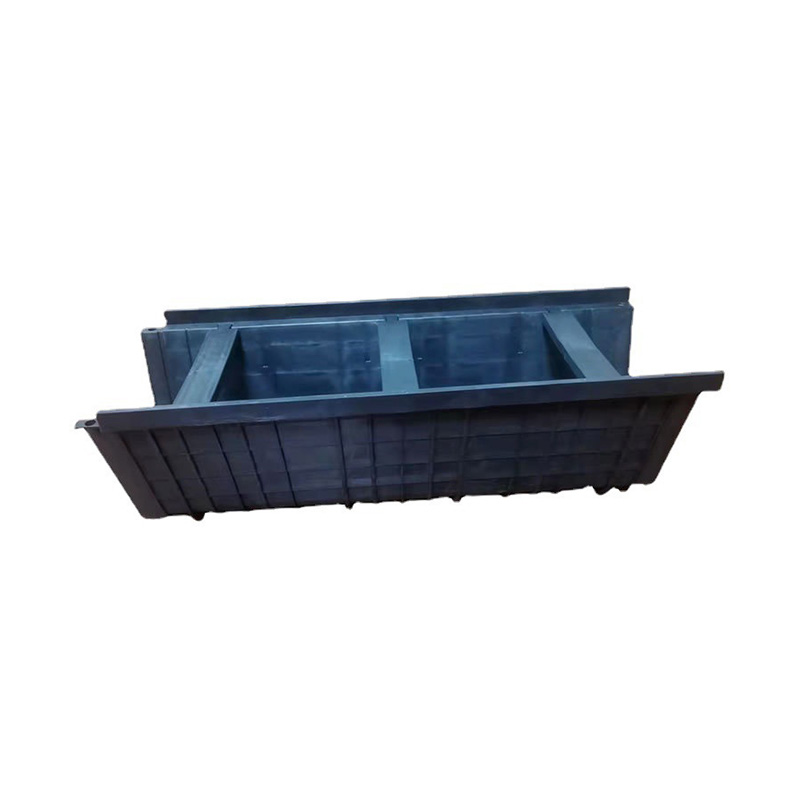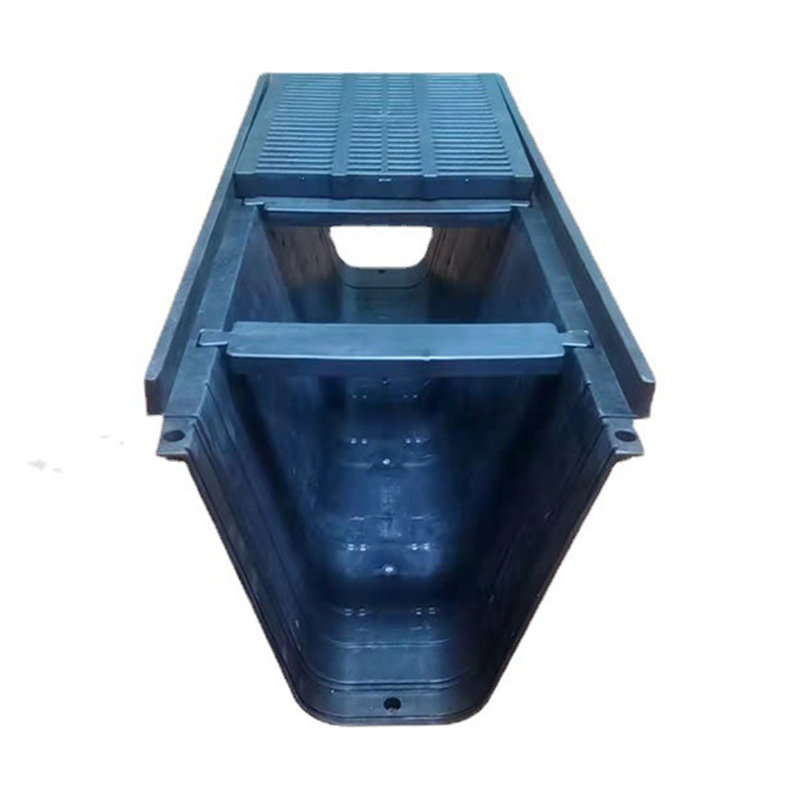Features
The V-shaped HDPE building material pipeline plastic drainage trench is characterized by several key features that make it a preferred choice for drainage applications. Firstly, its V-shaped profile enhances hydraulic efficiency by big the hydraulic radius, resulting in improved flow rates and reduced sediment deposition. The use of high-density polyethylene (HDPE) ensures exceptional durability and resistance to corrosion, abrasion, and chemical degradation, making it suitable for a wide range of environments.
Additionally, the lightweight nature of HDPE facilitates easy handling and installation, reducing labor costs and time requirements. The smooth interior surface of the drainage trench smalls frictional resistance and prevents clogging, ensuring long-term performance with small maintenance. Moreover, the UV-resistant properties of HDPE extend the service life of the drainage trench, making it suitable for outdoor applications exposed to sunlight.
Benefits
The adoption of the V-shaped HDPE building material pipeline plastic drainage trench offers numerous benefits for construction projects and infrastructure development. Firstly, its predominant hydraulic efficiency helps mitigate the risks of flooding, waterlogging, and soil erosion, safeguarding property and infrastructure from water damage. By effectively channeling surface water away from critical areas, it reduces the need for costly repairs and maintenance.
Furthermore, the durability and longevity of HDPE ensure reliable performance and cost savings over the lifespan of the drainage trench. Unlike traditional materials such as concrete or metal, HDPE is resistant to corrosion and deterioration, requiring small upkeep and replacement. This translates to reduced operational expenses and enhanced resilience to environmental challenges.
Moreover, the versatility of HDPE makes it suitable for a wide range of applications, including stormwater management, land drainage, and agricultural irrigation. Its customizable design allows for seamless integration with existing infrastructure, ensuring compatibility with diverse project requirements. The recyclability of HDPE also aligns with sustainable construction practices, promoting environmental stewardship and resource conservation.
Installation Process
The installation of the V-shaped HDPE building material pipeline plastic drainage trench follows a systematic process to ensure ideal performance and longevity. The step involves site preparation, including surveying, marking, and excavation of trenches to accommodate the drainage system. Careful attention is paid to the slope and alignment of the trenches to facilitate proper water flow towards the outlet point.
Once the trenches are prepared, the HDPE drainage trench sections are securely placed and connected to form a continuous network. Specialized fittings and connectors ensure watertight joints and seamless integration with other drainage components. Backfilling is then performed using suitable materials to cover and protect the drainage trench, ensuring stability and structural integrity.
After installation, thorough testing and inspection are conducted to verify the functionality and performance of the drainage system. Any adjustments or fine-tuning are made as necessary to optimize flow rates and alignment. Finally, surface restoration is carried out to conceal the drainage trench and restore the site to its original condition, small visual impact and preserving the aesthetic appeal of the surroundings.
The V-shaped HDPE building material pipeline plastic drainage trench finds diverse applications across various sectors, including:
Civil Engineering: Providing effective stormwater management solutions for roads, highways, bridges, and urban drainage systems.
Construction Sites: Ensuring efficient dewatering and groundwater control during excavation and construction activities to maintain a safe and stable work environment.
Land Development: Supporting land drainage and soil stabilization in residential, commercial, and industrial developments to prevent water accumulation and property damage.
Agricultural Sector: Facilitating irrigation and land reclamation projects in agricultural fields and farmland to improve soil productivity and crop yields.








